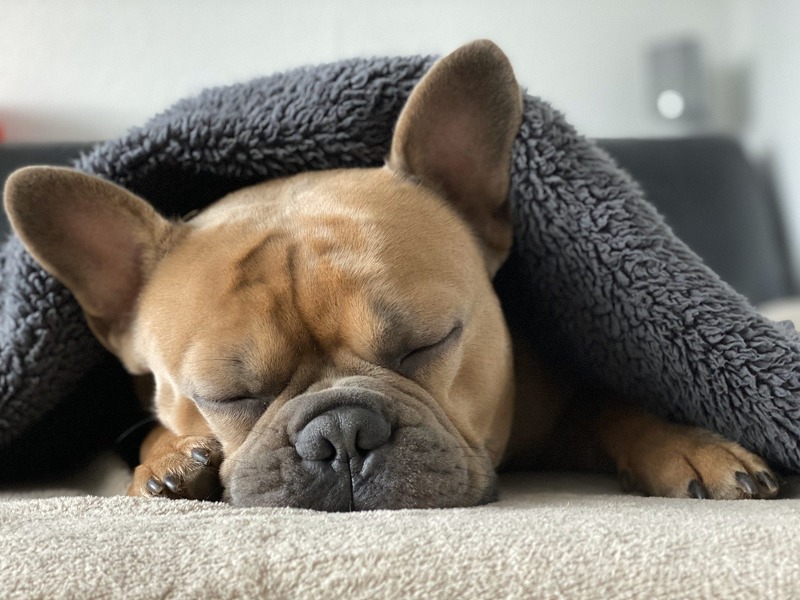The Lincoln Sound Sensitivity Scale for Dogs (LSSS)
The Lincoln Sound Sensitivity Scale (LSSS) for dogs is a widely used, validated and reliable tool used to assess your dog’s reactivity to noise.
The Lincoln Sound Sensitivity Scale (LSSS) for dogs is a widely used, validated, reliable tool used to assess your dog’s reactivity to noise. A score of above 30 is taken to indicate noise phobia. It has been used in more clinical trials associated with noise fears than any other instrument available.

When being used to monitor a new treatment, a baseline score is collected based on your dog’s normal response. The scale is then use after a series of exposures (e.g. after a week of firework events) to generate a new score and evaluate how your dog has changed. However, if evaluating a new treatment please note, many animals can show a large placebo response (non-specific improvement) and you should consider using the Lincoln Canine Anxiety Scale (LCAS) instead, to obtain a more detailed view of your dog’s behaviour after each event.
Please note, many dogs with sound sensitivity also suffer from low grade pain and so a careful evaluation of any animal showing sounds of sound sensitivity for conditions that might be contributing to the problem is essential.
The tool has been developed and validated by researchers within the Animal Behaviour, Cognition and Welfare Group, School of Life Sciences, University of Lincoln.
The LSSS can be used:
a) As a clinical tool to assess whether or not a dog has a noise fear/phobia requiring treatment.
b) To improve the management of problems relating to noise fears in dogs, and also as a research tool, to evaluate new treatments against others assessed using this instrument – see related publications.
c) In the screening of shelter dogs at the time of relinquishment, or working dogs to predict their need for remedial intervention.
Product: LSSS is a 17 item questionnaire with each item relating to a specific sign. Each is scored for intensity and frequency to generate an overall, measure of severity of that sign and the total score of 16 of these items indicates the severity of the problem.
Academic Profile: https://staff.lincoln.ac.uk/dmills
Consultancy: Consultancy services offered through the Animal Behaviour Clinic a professional service to industry and a referral only clinic for pets and animals of all species with behaviour and training problems located at the University of Lincoln’s City Centre campus.
Commercial Use:
This assessment tool is freely available for personal use. If you require commercial use please send enquiries to contracts@lincoln.ac.uk.
-
expand_more library_books References (13)
- Mills, D. S., Estelles, M. G., Coleshaw, P. H., & Shorthouse, C. (2003). , Retrospective analysis of the treatment of firework fears in dogs.
- Sheppard, G., & Mills, D. S. (2003) , Evaluation of dog-appeasing pheromone as a potential treatment for dogs fearful of fireworks., Veterinary Record, 152(14), 432-436.
- Estelles, G. M., Mills, D. S., Coleshaw, P. H., & Shorthose, C. (2005 , A retrospective analysis of relationships with severity of signs of fear of fireworks and treatment outcome in 99 cases., Current Issues and Research in Veterinary Behavioral Medicine, 161-4.
- Mills, D. (2005) , Management of noise fears and phobias in pets., In practice, 27(5), 248-255.
- Levine, E. D., Ramos, D., & Mills, D. S. (2007), A prospective study of two self-help CD based desensitization and counter-conditioning programmes with the use of Dog Appeasing Pheromone for the treatment of firework fears in dogs (Canis familiaris)., Applied Animal Behaviour Science, 105(4), 311-329
- Sherman, B. L., & Mills, D. S. (2008) (2008), Canine anxieties and phobias: an update on separation anxiety and noise aversions, Veterinary Clinics of North America: Small Animal Practice, 38(5), 1081-1106
- Levine, E. D., & Mills, D. S. (2008) , Long-term follow-up of the efficacy of a behavioural treatment programme for dogs with firework fears
- Cracknell, N. R., & Mills, D. S. (2008) (2008), A double-blind placebo-controlled study into the efficacy of a homeopathic remedy for fear of firework noises in the dog (Canis familiaris), The Veterinary Journal, 177(1), 80-88
- Cracknell, N. R., & Mills, D. S. (2011) (2011), An evaluation of owner expectation on apparent treatment effect in a blinded comparison of 2 homeopathic remedies for firework noise sensitivity in dogs, Journal of veterinary behavior, 6(1), 21-30
- Mills, D. (2016) (2016), Sound sensitivities: do’s and don’ts, BSAVA Congress Proceedings 2016, 464-465
- McPeake, K., Affenzeller, N., & Mills, D. (2017) (2017), Noise sensitivities in dogs: a new licensed treatment option, Veterinary Record, 180(14), 353-355
- Lopes Fagundes, A. L., Hewison, L., McPeake, K. J., Zulch, H., & Mills, D. S. (2018) (2018), Noise sensitivities in dogs: an exploration of signs in dogs with and without musculoskeletal pain using qualitative content analysis, Frontiers in veterinary science, 5, 17
- Engel, O., Müller, H. W., Klee, R., Francke, B., & Mills, D. S. (2019) (2019), Effectiveness of imepitoin for the control of anxiety and fear associated with noise phobia in dogs, Journal of veterinary internal medicine, 33(6), 2675-2684
-
expand_more cloud_download Supporting documents (1)Product brochureThe Lincoln Sound Sensitivity Scale for Dogs (LSSS).pdfAdditional files may be available once you've completed the transaction for this product. If you've already done so, please log into your account and visit My account / Downloads section to view them.